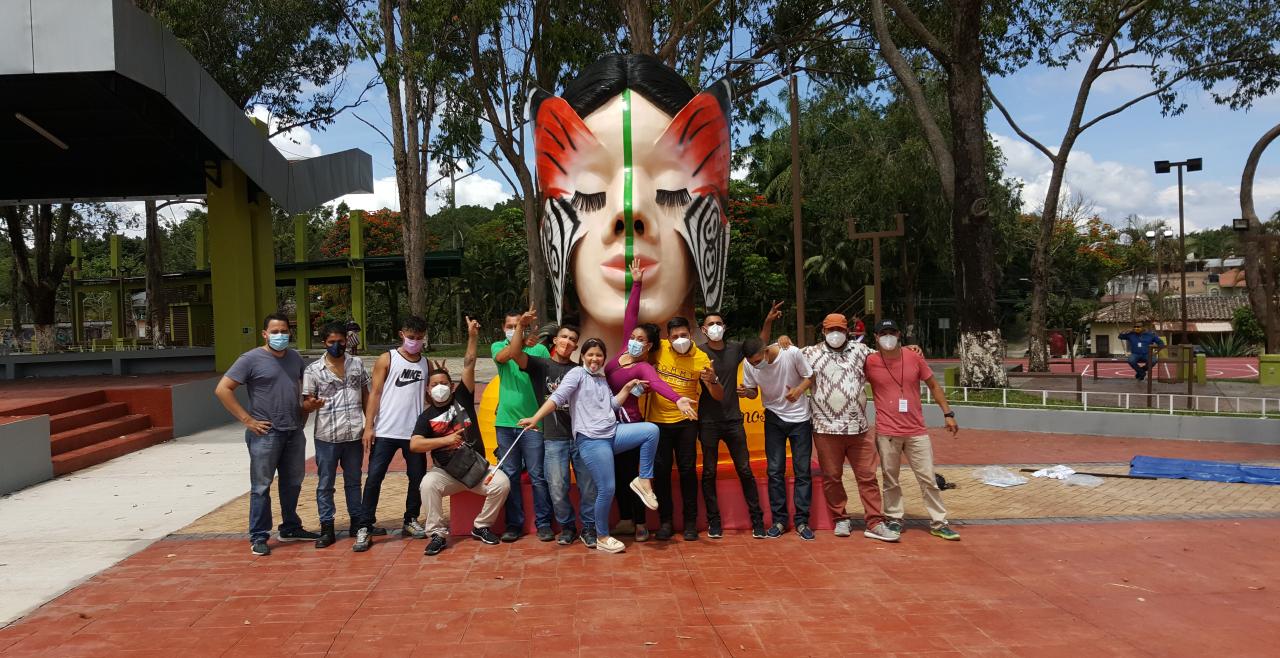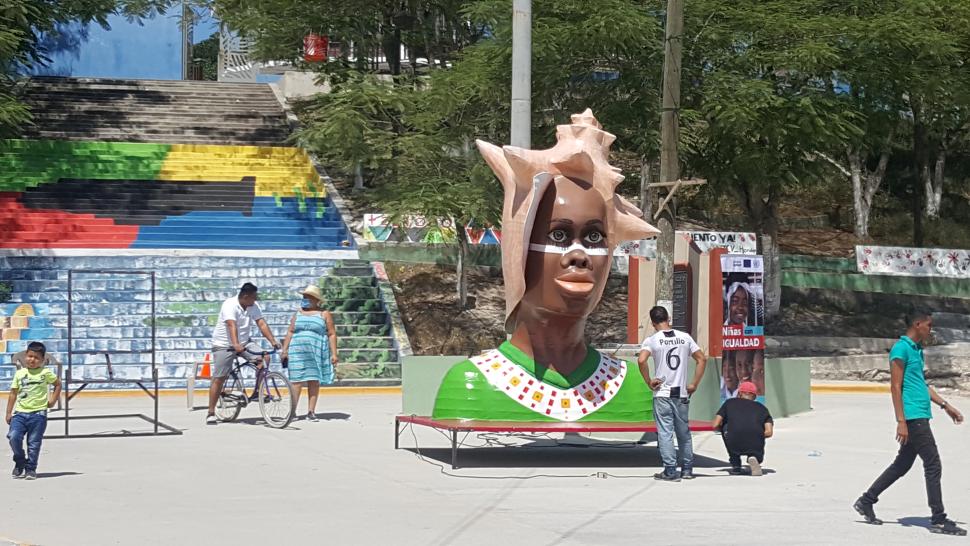Can we talk about this? Public art provokes community conversations in Honduras

In Honduras, UNICEF is partnering with local governments to reach over 400,000 people in 17 municipalities through enormous public art exhibits that challenge harmful social and gender norms and violence against women and girls.
In 17 Honduran municipalities, giant sculptures and murals of women and adolescents have been appearing overnight, in unexpected places, as part of a Spotlight Initiative programme. With deeply entrenched narratives around masculinity, gender roles and power relations between men and women in Honduras, violence against women and girls is perpetrated within a framework of cultural normalization and impunity. The situation demands urgent interventions to address its various causes. Public art has proven to be an effective way to promote solutions that break cycles of violence in communities.
“Over 400,000 people have engaged with these giant sculptures so far,” says Nancy Zúniga, Child Protection Officer, UNICEF Honduras. “We have 175 volunteers who have been trained to replicate the exhibition in their communities. They spend the first week of each exhibit answering people’s questions and offering more information. Sometimes, the volunteers are attacked by those who find the messages challenging.”
Community leaders and activists say they feel emboldened to speak out against harmful practices and discriminatory social and gender norms as a result of the increased public sensitization from the programme.
“After visiting this exhibition, my biggest realization was that I have to stop being afraid. Now I walk in my community feeling free to support other women,” says Pastora, a community leader and Spotlight Initiative-trained violence interrupter.
“This journey began with the fact that first, my beliefs changed,” explains Darwin, also a community leader and violence interrupter. “This improved my relationship with my family. Now, the next goal is to work with people in my community.”
“After visiting this exhibition, my biggest realization was that I have to stop being afraid. Now I walk in my community feeling free to support other women." - Pastora, community leader and Spotlight Initiative-trained violence interrupter.
“By taking these sculptures into the heart of communities, we are engaging people where they are most comfortable. Parks, busy public areas and even streets where many truck and bus drivers pass through. We have managed to open up conversations with them and others who spend much of their day socializing in public spaces," says Ms. Zúniga.
In a 2016 survey on public perception of insecurity, 93 per cent of the respondents stated that violence against women and girls was a serious issue in Honduras. Between 2005 and 2017, there were over 5,000 victims of femicide, with 389 cases recorded in 2017 alone, not counting the deaths that were not reported or recorded.
More recent reports suggest a woman is murdered every 36 hours. Evidence shows that the individuals that are most affected by violence are young women and girls aged under 24 years, particularly amongst groups facing multiple and intersecting forms of discrimination.
According to the National Autonomous University of Honduras Observatory of Violence, there were almost 30,000 requests for forensic medical examinations for sexual offences between 2005 and 2017. From 2005 to 2015, this number increased by 248 per cent.
“We now question the physical punishments and patriarchal beliefs that we all grew up with." - Samuel, 19
Nineteen-year-old Samuel, a social change activist in the Western Highlands of Honduras, has been volunteering with a local association that uses art to combat harmful social and gender norms. Through workshops, Women in the Arts employs drama and art illustrations to encourage young people to reflect on solutions that could break the cycle of violence in their communities.
“We now question the physical punishments and patriarchal beliefs that we all grew up with,” says Samuel, 19, a social activist. “They contribute to sexual and domestic violence, and even femicide. We all need to rethink our beliefs and attitudes. I hope my art can contribute to us realizing a society where men and women can participate equally and lead exciting and fulfilling lives.”

